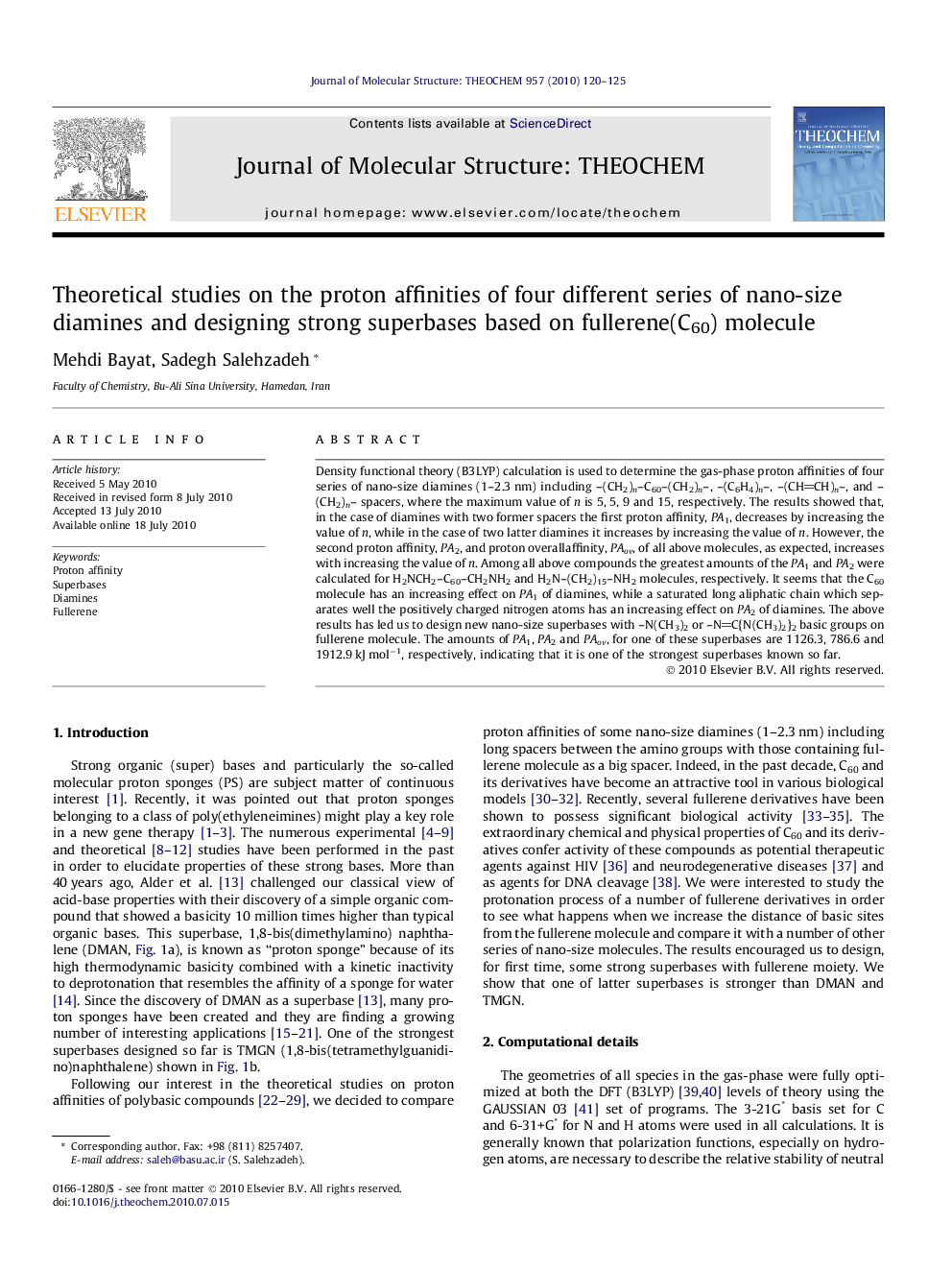| Article ID | Journal | Published Year | Pages | File Type |
|---|---|---|---|---|
| 5416322 | Journal of Molecular Structure: THEOCHEM | 2010 | 6 Pages |
Abstract
Density functional theory (B3LYP) calculation is used to determine the gas-phase proton affinities of four series of nano-size diamines (1-2.3Â nm) including -(CH2)n-C60-(CH2)n-, -(C6H4)n-, -(CHCH)n-, and -(CH2)n- spacers, where the maximum value of n is 5, 5, 9 and 15, respectively. The results showed that, in the case of diamines with two former spacers the first proton affinity, PA1, decreases by increasing the value of n, while in the case of two latter diamines it increases by increasing the value of n. However, the second proton affinity, PA2, and proton overallaffinity, PAov, of all above molecules, as expected, increases with increasing the value of n. Among all above compounds the greatest amounts of the PA1 and PA2 were calculated for H2NCH2-C60-CH2NH2 and H2N-(CH2)15-NH2 molecules, respectively. It seems that the C60 molecule has an increasing effect on PA1 of diamines, while a saturated long aliphatic chain which separates well the positively charged nitrogen atoms has an increasing effect on PA2 of diamines. The above results has led us to design new nano-size superbases with -N(CH3)2 or -NC{N(CH3)2}2 basic groups on fullerene molecule. The amounts of PA1, PA2 and PAov, for one of these superbases are 1126.3, 786.6 and 1912.9Â kJÂ molâ1, respectively, indicating that it is one of the strongest superbases known so far.
Related Topics
Physical Sciences and Engineering
Chemistry
Physical and Theoretical Chemistry
Authors
Mehdi Bayat, Sadegh Salehzadeh,
